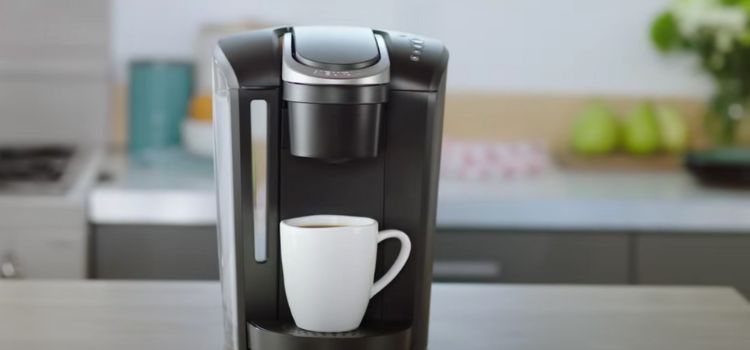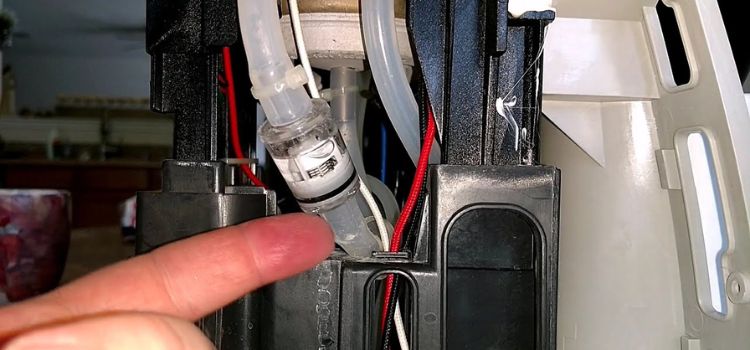As an Amazon Associate, I earn from qualifying purchases

Keurig machines have become a staple in many homes and offices, offering a convenient and quick way to enjoy a fresh cup of coffee. These single-serve coffee makers are loved for their ease of use, variety of coffee options, and the ability to deliver a hot cup in just minutes.
However, like any other appliance, Keurig machines can sometimes encounter issues, with leaking being one of the most common and frustrating problems faced by users. Picture this: you wake up in the morning, eyes barely open, and you fumble your way to the kitchen only to discover a pool of water around your beloved Keurig.
Not the best start to the day, right? Leaks can be a major inconvenience, potentially damaging your countertops and interrupting your caffeine routine. But fear not! Understanding why your Keurig is leaking and how to address the issue can save you time, frustration, and possibly even money on repairs or replacements.
Identifying the root cause of a leak is the first step in resolving the issue. Here are some common reasons your Keurig might be leaking:
- Overfilling the Water Reservoir: It might sound simple, but overfilling the water reservoir can cause leaks. Each model has a maximum fill line, and exceeding it can result in water spilling over, especially during the brewing process.
- Blocked or Clogged Needles: Keurig machines use needles to puncture the coffee pod and deliver water through it. If these needles become clogged with coffee grounds or other debris, it can cause water to back up and leak.
- Misaligned or Damaged Water Reservoir: If the water reservoir is not seated correctly on the machine, it can lead to leaks. Additionally, cracks or damage to the reservoir itself can be a source of water leakage.
- Worn-out O-Rings and Seals: Over time, the rubber seals and O-rings that help maintain pressure and prevent leaks can wear out or become damaged, leading to water escaping from unintended places.
- Internal Component Malfunctions: Sometimes, leaks can result from issues within the machine’s internal components, such as a faulty pump or tubing that has come loose.
- Build-up of Coffee Grounds or Debris: Accumulation of coffee grounds or other debris inside the machine can interfere with its normal operation, potentially causing leaks.
Troubleshooting Steps to Identify the Problem

Now that we know some potential causes, let’s move on to troubleshooting to pinpoint the problem:
- Preliminary Checks:
- Ensure your Keurig is placed on a level surface. An uneven surface can cause water to pool in areas it shouldn’t.
- Double-check that the water reservoir is correctly seated on the machine. It should click into place without any gaps.
- Inspect the Water Reservoir: Remove the reservoir and inspect it for any visible cracks or misalignments that could be causing leaks.
- Check for Blockages in the Needles: Use a paperclip or a needle cleaning tool to carefully remove any blockages from the needles. This will help ensure that water flows properly through the machine.
- Examine O-rings and Seals: Remove any accessible seals or O-rings and inspect them for wear or damage. Replacing worn-out seals can often resolve leak issues.
- Run a Brew Cycle Without a Pod: This can help identify if the leak is present during the brewing process itself. Observe the water flow to see if it leaks from a specific area.
Solutions for Fixing Common Issues
Once you’ve identified the problem, it’s time to fix it. Here’s how you can tackle common issues:
- Correcting Reservoir Placement and Alignment: Make sure the reservoir is properly aligned and seated on the machine. Gently press down to ensure it’s securely in place.
- Cleaning and Unclogging Needles: Regularly clean the needles using a needle cleaning tool or an unfolded paperclip. This will prevent clogs and ensure smooth water flow.
- Replacing Damaged Parts: If you find any damaged components such as the reservoir, seals, or O-rings, consider replacing them. Most parts are readily available online or from Keurig directly.
- Performing a Thorough Descaling Process: Over time, mineral deposits from water can build up inside the machine, affecting its performance. Descale your Keurig regularly using a descaling solution or vinegar to keep it running smoothly.
Preventive Measures to Avoid Future Leaks
Preventive maintenance can go a long way in avoiding leaks:
- Regular Cleaning and Maintenance: Make a habit of cleaning your Keurig regularly, including the exterior, water reservoir, and drip tray. A monthly descaling routine can prevent mineral build-up.
- Proper Use and Handling of Machine Components: Handle all parts with care, especially when removing or replacing them. Avoid using excessive force, which can lead to damage.
- Avoid Overfilling the Reservoir: Always fill the reservoir to the recommended level to prevent overflow during brewing.
- Use Filtered Water: Using filtered water can reduce the number of minerals entering the machine, thus minimizing build-up and the need for frequent descaling.
Conclusion
Addressing Keurig leaks promptly is crucial for maintaining its efficiency and prolonging the machine’s life. By understanding the potential causes of leaks and knowing how to troubleshoot and fix them, you can ensure your Keurig remains a reliable companion in your caffeine journey.
Regular maintenance and mindful usage can prevent leaks from occurring in the first place, allowing you to enjoy hassle-free coffee brewing every day. With a little care and attention, your Keurig can continue to serve up delicious coffee without the mess and frustration of leaks. Enjoy every sip with confidence, knowing that your machine is in top shape.
As an Amazon Associate, I earn from qualifying purchases